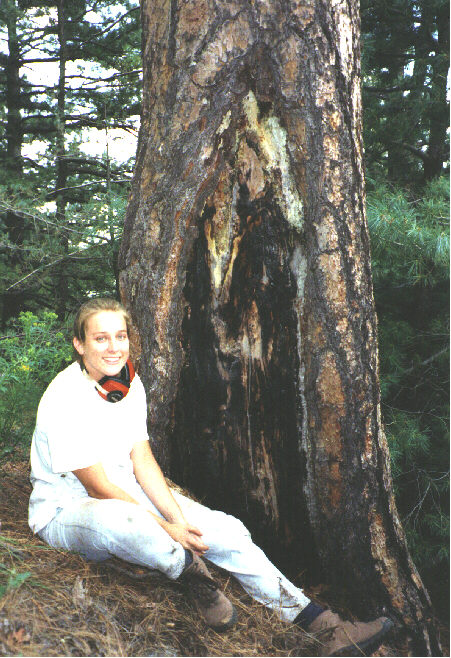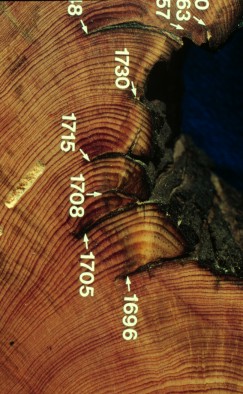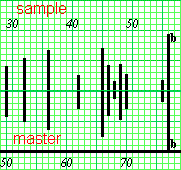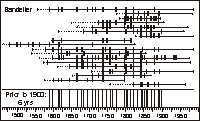Laboratory
|

Close up of fire scars recorded in tree growth. Photo by Tom Swetnam |
|

Ponderosa pine showing many fire-scars in a large catface. Photo by Henri Grissino-Mayer. |
|

Cross section showing many fire-scars (white arrows). Photo by Chris Baisan. |
|

Example crossdating of sample graph (top) with master graph (bottom). Image by Paul Sheppard. |
|

Example fire graph for Bandelier National Monument, New Mexico. Image by Tom Swetnam. |
Laboratory of Tree-Ring Research, University of Arizona
Tucson, Arizona 85721 USA
Main Office: (520) 621-1608, Fax: (520) 621-8229
Comments to Paul Sheppard: sheppard @ ltrr.arizona.edu
Copyright © 2000-2012, Laboratory of Tree-Ring
Research, University of Arizona
Revised — April, 2012
URL: http://www.ltrr.arizona.edu/~sheppard/swland/scartree.html